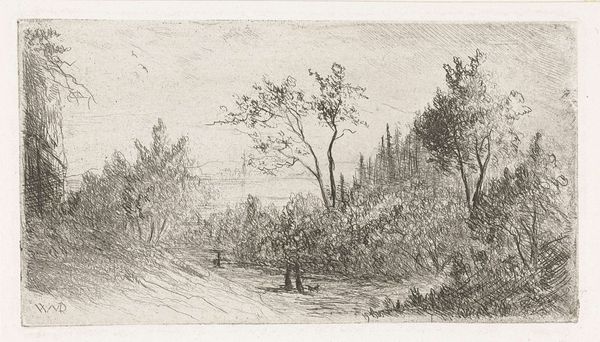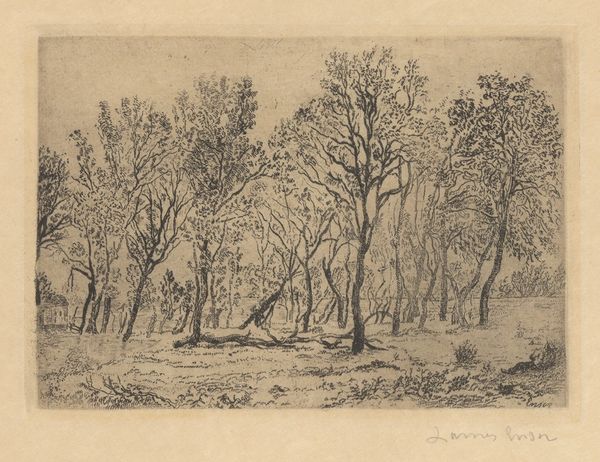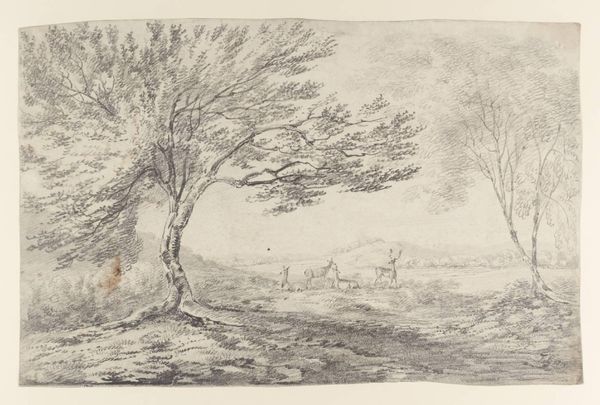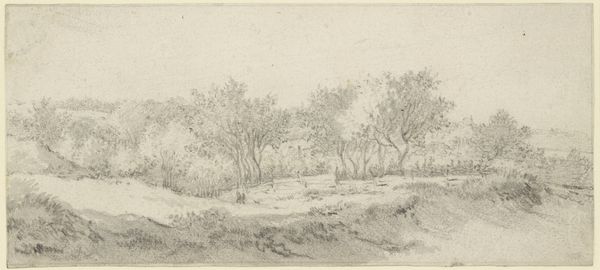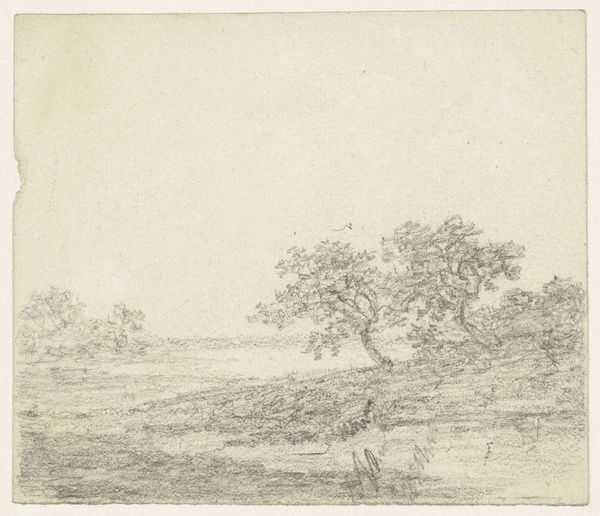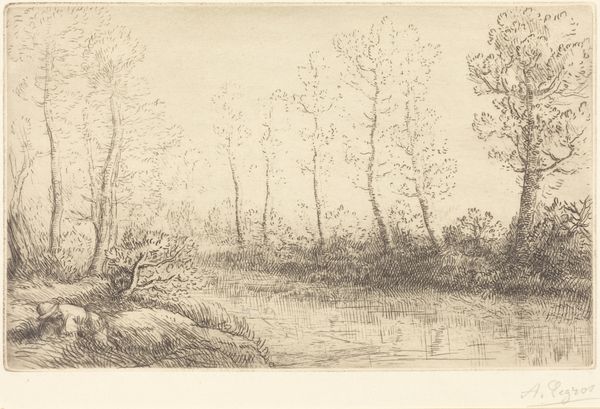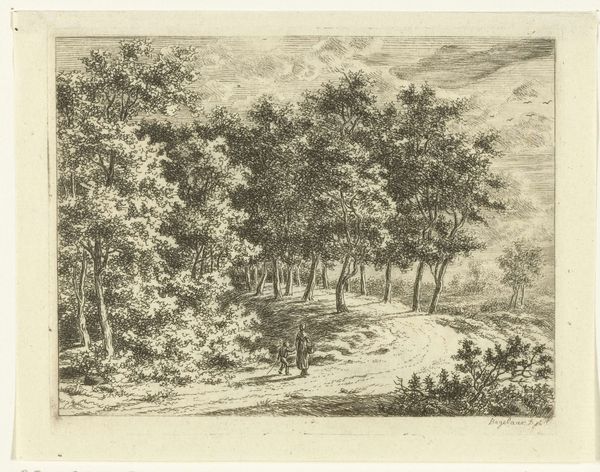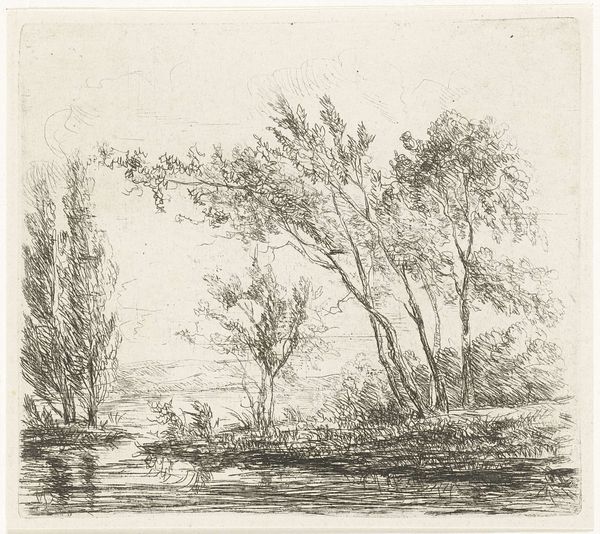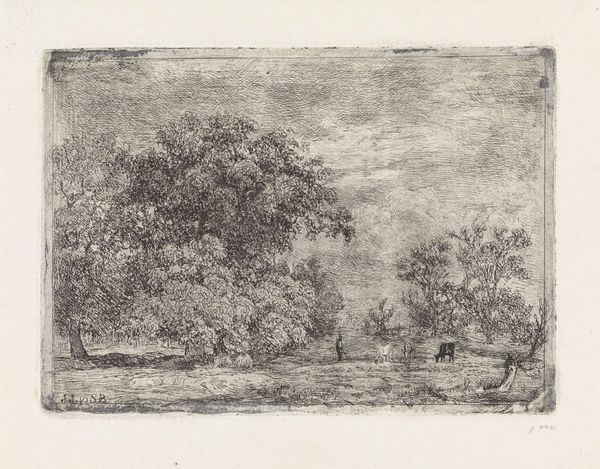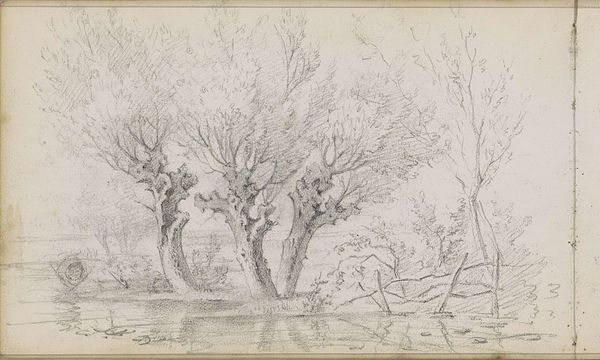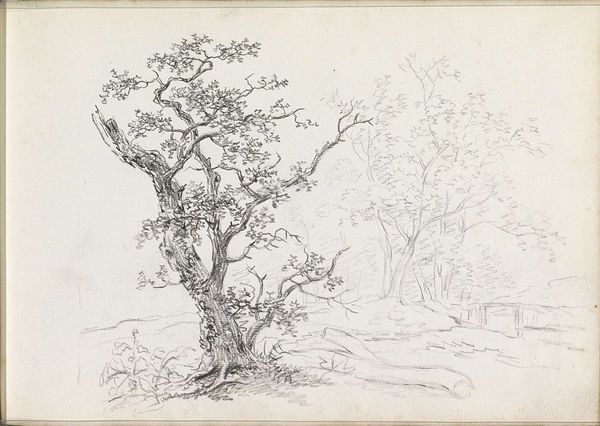
drawing, print, etching, graphite
#
drawing
# print
#
etching
#
landscape
#
graphite
#
realism
Dimensions: height 87 mm, width 98 mm
Copyright: Rijks Museum: Open Domain
Curator: Here we have Johan Frederik Croockewit's etching titled "Wilgenrij," dating sometime between 1842 and 1898. The work appears to be executed in graphite, possibly as a drawing that then informed the final print. What's your initial impression? Editor: Mmm, it’s so subtle. Ghostly, even. I get this feeling of quiet melancholy, like a half-remembered dream. The composition, those trees huddled together… there's something about the thin scratchy line work that just hits you. Curator: Well, landscape prints were quite popular at the time. Etchings like these, circulating among a growing middle class, represented an idealised view of the Dutch countryside that promoted notions of home and national identity. Editor: Perhaps. But for me, that single figure in the distance pulls at something else. There's a story there, unfinished, slightly sad. Curator: I see what you mean. Art historians debate whether those small figures were aesthetic elements, staffage to simply balance a composition or if they really suggested everyday lives embedded within that national landscape. What do you think it tells us? Editor: Hard to say. They appear as witnesses, maybe even intrusions on the serene backdrop. The willow trees themselves are symbolic of loss and mourning and here they are set against that quiet and solitary figure. Curator: The fascinating thing about art like this is its place within developing Dutch infrastructure. Croockewit lived and worked when these scenes were easily accessed by train. So landscape etchings like these weren’t about capturing the wholly inaccessible; instead, they present something newly seen and accessible, helping mold middle-class ideas around leisure. Editor: Oh! So you’re saying he isn't necessarily presenting an entirely idealised place, just simply presenting new middle class lifestyle that is newly founded? The accessibility almost becomes more relatable this way as his work now highlights the lives they lead. Interesting! Curator: Precisely. It prompts us to think critically about not just the scene presented, but about the context around its creation and dissemination. Editor: True, yet it still speaks to something elemental, something that reaches across centuries. Its whispers of loneliness are strangely powerful even now. Thanks for illuminating! Curator: The pleasure was all mine. Art is always so much richer when you look beyond what's visible.
Comments
No comments
Be the first to comment and join the conversation on the ultimate creative platform.

